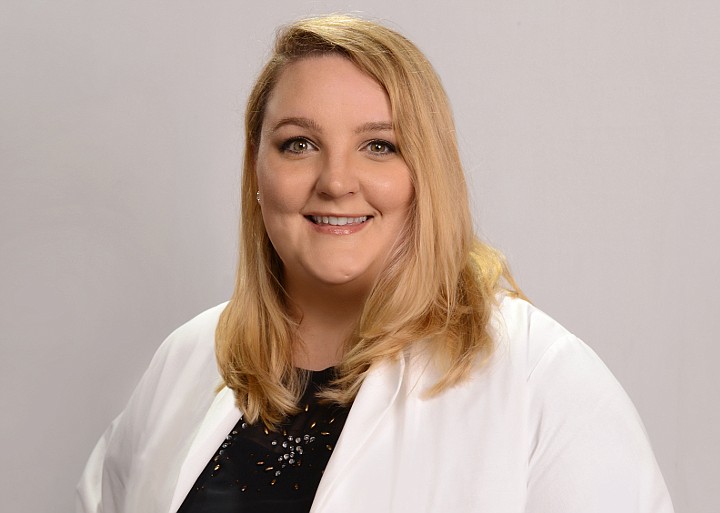Summer is here, and people are beginning to spend more time outside basking in the sunshine.
But if you are someone who avoids the outdoors, has dark skin or eats a restrictive diet, then you might be at risk of developing a vitamin D deficiency.
What does vitamin D do for me?
It is widely known that vitamin D helps to maintain strong, healthy bones by promoting the body's absorption of calcium. Recent studies also have found that sufficient intake of this fat-soluble nutrient might also protect against osteoporosis, high blood pressure, certain cancers and several types of autoimmune diseases. There was a recent retrospective study from the University of Chicago Medicine indicating that people with vitamin D deficiency may be at an increased risk of being infected with COVID-19.
In order to reap the benefits of vitamin D, however, the body needs to absorb adequate amounts either through sunlight or diet and supplements. The trouble is that most people aren't getting near enough from their daily routines.
How do I get vitamin D?
The sun is the most readily available source of vitamin D, and spending just 10-15 minutes outdoors in the midday sun is enough for a light-skinned person to absorb a sufficient amount. People with darker skin, however, need to spend about an hour to an hour and a half in the sun to take in the same amount.
Be careful, sun exposure without the use of sunscreens or protective clothing can increase the risk of skin cancers including melanomas, basal cell and squamous cell carcinomas.
Foods like fortified cereals and milk, or fatty fish, eggs and oysters can also supply a small amount of vitamin D, but it is difficult to get enough from diet alone. Over-the-counter supplements can help bridge that gap, but be careful to not take too high of a dose. Excessive amounts can cause nausea, vomiting, constipation, fatigue and irregular heartbeats.
How much do I need?
The Recommended Dietary Allowance (RDA) of vitamin D is 600 IU (Imperial Units) in adults through the age of 70, and 800 IU for those older than 70. These current recommendations have been found to effectively maintain your body's bone health and to meet the nutritional requirements of a typically healthy person.
Why am I not getting enough?
There are several situations that typically result in a person developing a vitamin D deficiency.
For example:
You primarily stay indoors during the sunny days of spring and summer.
You eat a strict vegetarian or vegan diet.
You have dark skin tone. The melanin in dark skin reduces the body's ability to produce vitamin D from the sunlight.
You are obese. People with a body mass index of 30 or greater typically have low blood levels of vitamin D.
You have had gastric bypass surgery that could limit your body's absorption of nutrients.
You suffer from cystic fibrosis, celiac disease (gluten intolerance) or any other type of inflammatory bowel disease that prevents your body from absorbing vitamin D.
You take certain types of medications such as anticonvulsants, steroids, antifungal and some antiviral or weight-loss drugs.
What are the symptoms and health risks of a vitamin D deficiency?
Symptoms of a vitamin D deficiency include chronic fatigue, depression, muscle weakness, spasms and cramps. Patients also experience bone pain and have a greater risk of falls since this deficiency weakens the bone structure. This deterioration of bone mass is what's known as osteoporosis.
Research also suggests that people who suffer a prolonged deficiency in vitamin D have a greater risk of developing other health issues like, type-1 or type-2 diabetes, colon, prostate and breast cancers, hypertension or multiple sclerosis.
How is vitamin D deficiency treated?
Your doctor will first determine your current vitamin D levels through a simple blood test. Once it is found that you have a deficiency, he or she will prescribe a high-level oral treatment of 50,000 IU of vitamins D2 or D3 once per week for a total of eight weeks, depending on the severity of the deficiency. Once your levels are where they are supposed to be, your doctor will put you on a maintenance dose of 1,000 units per day.
Research studies continue to discover new benefits of having healthy levels of vitamin D in your bloodstream, but they have also revealed new dangers of having too little. If you are experiencing the symptoms of any type of vitamin deficiency, consult your doctor as soon as possible to determine the best treatment plan for you.
Joanna Younker, DO, is a board-certified family medicine physician at SSM Health Medical Group, 2511 W. Edgewood, in Jefferson City. For an appointment with Dr. Younker, call 573-761-0458.

